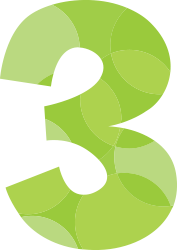
Welcome, Third Grade Math Teachers.
Resources on this page are organized by the Instructional Framework. Click on the Cluster in the table below to be taken to the resource page for lessons, tasks, and additional resources for teaching the NC Mathematics Standard Course of Study.
The purpose of this document is to connect and sequence mathematical ideas to enable teachers to plan learning opportunities for students to develop a coherent understanding of mathematics. Clusters and sequencing are designed to foster students’ meaning making of the connections among mathematical ideas and procedures. This meaning making occurs overtime. Therefore, the concepts are included in multiple clusters with increasing depth. They build across the year beginning with conceptual understanding and moving toward procedural fluency.
Each cluster includes a list of related content standards and a range of suggested duration. Standards indicate the mathematics expectations of students by the end of the school year. Standards are introduced and developed throughout the year, so the fact that a content standard is listed in a particular cluster does not indicate that it is to be mastered in the cluster.In some clusters, strikethroughs in the content standards denote the portion of the standard that will be taught later. In other clusters, the full standard appears, but suggestions about the intended focus are noted in the cluster descriptions. Because standards may be included in clusters long before mastery is expected, formative assessment is an essential tool for instructional planning and reporting student progress. This assessment naturally occurs as teachers elicit students’ mathematical thinking and reasoning while doing mathematics.
Particular Standards for Mathematical Practice are indicated for each cluster. The listed suggestions are a guide for teachers. While the practices listed may lend themselves particularly well to the cluster’s content, this does not imply that they are the only practices students will use. Students doing rich mathematical tasks will naturally engage in many mathematical practices as they do mathematics. During instruction teachers may observe and decide to highlight the other practices students are using beyond those listed in the cluster.
Each cluster includes a section called “What is the mathematics?” that describes the significant concepts and connections within the standards necessary for students to make sense of and use the mathematics. A second section called “Important Considerations”provides guidance based on student learning progressions as well as ideas and models for teaching within problem-solving situations. Problem-solving and mathematical reasoning define what it means to do mathematics. Rich tasks (including word problems) provide students with concrete contexts to use as they are introduced to new mathematics. Later, work within such tasks allows students to develop understanding and eventually to demonstrate mastery. Rich tasks with multiple entry and exit points allow for natural differentiation of instruction and are accessible for all students.
The initial cluster at each grade includes a focus on building mathematical community. Learning mathematics involves productive struggle during problem-solving and meaningful discourse as students share strategies and explain their thinking. This requires individual students to have a mathematical mindset, a belief that they can learn and do mathematics, so they will take risks when solving non-routine tasks. Collectively, students must share ideas publicly as they critique mathematical ideas with peers and teacher. A safe community where mistakes and struggles are valued as learning opportunities is essential. Mathematical norms about how students do and talk about mathematics need to be explicitly established in the same way that other routines and expectations are introduced at the beginning of a school year.
